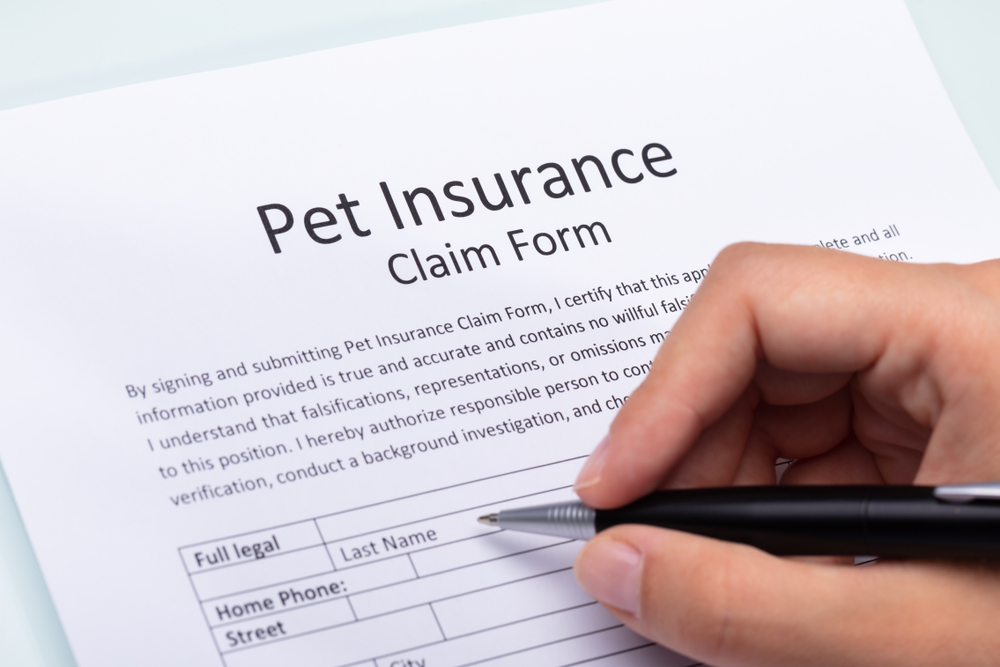When your pet has an unexpected illness or injury, a million questions run through your mind—Will my pet be OK? Are they in pain? How did this happen? What treatment does my pet need? And, of course—how much will my pet’s care cost? If you believe your pet could incur an emergency care expense that might significantly impact your finances, pet insurance can help alleviate the worry that you may be forced to decide whether your budget—your living expenses, and cost of food and medications—is more important than your pet’s treatment. Pet insurance provides you with a monetary safety net for your pet’s emergency care needs, ensuring they receive the necessary care without devastating your savings account. You must take a lot into consideration when researching a pet insurance plan, and our Mt. Horeb Animal Hospital team details the questions you should ask to ensure you choose the best insurance plan for you and your pet.
Question: Does my pet need insurance?
Answer: Most pet owners believe pet insurance is necessary and absolutely worth it. If your pet is healthy and you can afford to pay a monthly premium, pet insurance can save you thousands of dollars in veterinary bills. If your pet is older or has a pre-existing condition—which traditional pet insurance policies do not cover—they can still be covered for non-related, accidental injuries and for future illnesses. Pet insurance can cut the cost of all their health needs—from routine veterinary services to emergency care.
Q: How is pet insurance processed?
A: Most pet insurance plans operate on a reimbursement model, meaning you pay for veterinary services out of pocket, and submit a claim—online or through an app—to your insurer, who reimburses you. Typically, you must provide the following information when filing your claim:
- Veterinary records — If you are filing your first insurance claim, submit all your pet’s veterinary records, and documentation of their current diagnosis and the procedures the veterinary professionals performed during the visit for which you are requesting reimbursement.
- Itemized invoice — Ensure your veterinary invoice details all charges and payment proof when filing for reimbursement.
- Banking details — For electronic reimbursement, provide your pet insurance company with your current banking information.
Q: When is the best time to insure your pet?
A: The best time to insure your pet is when they are young and healthy, because most insurance companies do not cover pre-existing conditions (i.e., any health-related disorder that has been diagnosed before the pet’s health insurance coverage takes effect). Most pet insurance companies provide coverage for pets as young as 8 weeks of age. When you purchase insurance for an older pet or a pet with a pre-existing condition, you can ensure coverage for future, non-related conditions and services.
Q: What does pet insurance cover?
A: When trying to find the best insurance policy for you and your pet, do your research, and ensure you understand the coverage. Every insurance company’s policies differ slightly, but most offer the following coverage options:
- Accident-only coverage — This plan type covers accidental injuries (e.g., broken bones, foreign-object ingestion) and other medical conditions.
- Illness and accident coverage — This plan type usually covers diagnosis and treatment costs for conditions such as cancer, endocrine disorders, and some orthopedic injuries.
- Wellness coverage — Many pet insurance companies offer wellness riders that you can add to most accident and illness plans. These riders may cover preventive services, such as:
- Annual wellness exams
- Vaccinations
- Routine blood work
- Spay and neuter procedures
- Dental cleanings
- Flea, tick, and heartworm prevention and testing
Q: How much does pet insurance cost?

A: According to the North American Pet Health Insurance Association (NAPHIA), the average U.S. pet insurance cost is $46 per month for a dog and $26 per month for a cat. The cost varies by the company and by the following factors:
- Age — Younger pets are generally healthier and will have lower monthly rates than older pets who are more prone to ailments.
- Breed — Some breeds have a genetic predisposition for certain conditions, which can increase the monthly cost.
- Species — A dog typically costs more to insure than a cat.
- Coverage — The coverage amount you choose affects your monthly premium. Accident-only coverage tends to be the most inexpensive option, and a comprehensive policy that covers veterinary expenses for accidents, illnesses, and routine veterinary visits tends to be more costly.
- Deductible — Pet insurance deductible rates are similar to rates for people. When you agree to pay a higher deductible, you pay a lower monthly premium, and when you pay a lower deductible, you will pay a higher monthly premium.
Some companies offer adjustable monthly premiums and deductible levels when you first enroll, and the overall cost varies by company. Compare multiple pet insurance company quotes to ensure you get the most benefit from your plan.
We know researching pet insurance plans can feel overwhelming, but keep in mind that our Mt. Horeb Animal Hospital team is always pleased to offer you guidance. Contact us with any pet insurance-related questions.







Leave A Comment